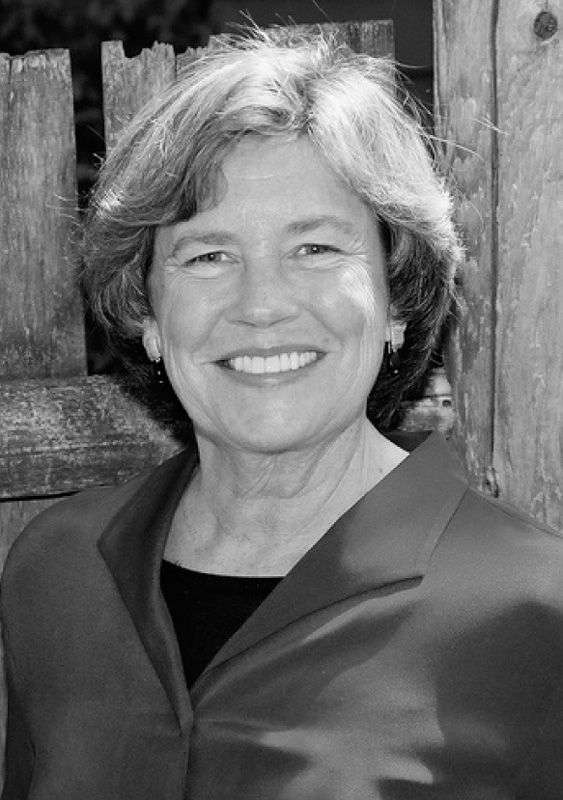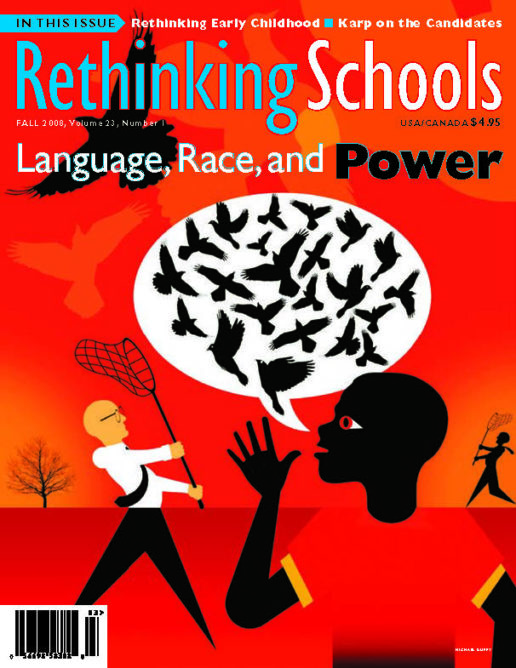Young Children at Risk

Taking Back Childhood: Helping Your Kids Thrive in a Fast-Paced, Media-Saturated, Violence-Filled World
By Nancy Carlsson-Paige
Hudson Street Press
Hardcover, $23.95. 304 pages.
“I feel like I’m this tiny island in a huge sea. Wherever (my son) goes, he has access to everything, and I can’t control it. He’s playing adult video games at other houses. It makes me sad.” — parent
“I quit (teaching kindergarten) today. I can’t stand to see what’s happening to kids. Kindergarten is nothing like it used to be. The blocks, water table, science corner with birds’ nests and feathers are all gone — there’s no time. It’s all learn the alphabet and reading and writing.” — teacher
Parents and teachers who want more for kids than videogames, TV violence, and standardized tests will take interest in Nancy Carlsson-Paige’s book, Taking Back Childhood: Helping Your Kids Thrive in a Fast-Paced, Media-Saturated, Violence-Filled World. Far from being a depressing book detailing everything wrong about the society in which we raise our children, this book is inspiring and practical. Taking Back Childhood looks at how to help children thrive in spite of it all. Carlsson-Paige shows how the three basic needs of childhood — creative play, security, and positive relationships — are threatened by children’s increased exposure to commercialism and violence through TV and other media, by parents’ increasingly hectic lives, and by changes in school culture that have replaced quality early childhood education with teaching designed mainly to prepare children for standardized tests.
Although much of this is beyond our immediate control, we can cultivate relationships with children and structure their lives to meet basic childhood needs. Carlsson-Paige’s background as an early childhood educator makes it especially useful for both parents and teachers of young children.
One of the book’s strengths is how Carlsson-Paige and the adults she interviews tell simple yet insightful stories about interactions with young children to illustrate deep concepts of child development. These stories, some of which I describe below, show concrete techniques that parents and teachers can apply with immediate results.
The book’s premise is to share child development theory with parents so that they can help children engage in play, feel secure, and develop positive relationships. Carlsson-Paige explains the basic developmental stages from birth to age 10. This is critical for parents and teachers. She cites a study that showed that most parents and adults lack information about child development, and says this could affect their ability to meet children’s needs. Throughout the book, Carlsson-Paige refers frequently to the different developmental stages in explaining how to approach specific situations with kids.
The book is filled with examples of children using creative play to work through their experiences, and shows how adults can encourage this. In some stories, children play with toys and props that help them process everyday experiences, like getting scared by a spider or being sick in the hospital. In others, themes of “good guys and bad guys,” rescue and war, enter into children’s creative play as they try to make sense of their fears and thoughts about violence, and assert their need to have some control over these.
But the book also shows how this type of healthy, creative play has been changed and threatened by media violence and commercialism. When the Federal Communications Commission deregulated children’s television in 1984, they allowed TV shows to be linked to children’s toys and products. Carlsson-Paige writes, “Thus were born countless popular TV shows that ultimately served as ads for entire lines of toys and products.” (Perhaps this explains why my 15-month-old says “Dora” over and over despite the fact that she is not allowed to watch TV — her 3-year-old sister has a lot of Dora products.) Even more troubling than the Dora product craze is the fact that many of the toys and products marketed to young children are linked to TV shows with violent content that is inappropriate for young children.
Carlsson-Paige notes that the “single-purpose” and electronic toys often linked to TV shows do not help children play in a way that allows them to be creative and bring in their own thoughts and experiences. So, at the very time that stressors in children’s lives are increasing (more media violence, less time with parents, more tests in school), children are losing the ability to cope with these stressors through play.
To address this, Carlsson-Paige suggests encouraging creative play by limiting single-purpose and electronic toys and instead providing children with open-ended materials like blocks, play dough and craft sticks, farm animals, and dolls. She shows how parents can make small suggestions to enhance children’s play, without directing it too much.
Carlsson-Paige weaves stories through the book that show how parents can build strong, loving relationships with children. These relationships, like play, help children deal with the stresses of life and feel secure. At the heart of these relationships is sharing power, solving problems together, and treating others with empathy and love. Carlsson-Paige shows how parents can share power with children in developmentally appropriate ways at different ages, and describes how to avoid power struggles or wielding power over children.
The book includes the story of a father whose 2-year-old son didn’t want to get out of the bathtub. (This is a daily occurrence in our house.) The father ended up taking the washcloth out of the child’s hand against the child’s will, and both felt terrible. Carlsson-Paige suggests that parents can use child development knowledge to help children manage these difficult situations. In this case the father could recognize the child’s feelings (“Oh, you don’t want to get out of the tub”) and then allow the son to take the washcloth with him as a transitional object to move from one activity to the next.
Another story describes a family that decided not to “lay down the law” by dictating how much TV their 7-year-old daughter could watch each day. Instead, the parents followed Carlsson-Paige’s advice of listening to their daughter, telling her how they felt about her TV watching, and ultimately deciding together how much TV she would watch each day. This strategy not only helped to solve a family problem, but also helped strengthen the parents’ relationship with their daughter, since they actively listened to each others’ perspectives and agreed on a plan they all could live with.
Adults can also help children develop healthy relationships with each other. Again, play and conversation can show children concretely what is appropriate and what is not. For example, after Carlsson-Paige’s grandson Jack took to screaming “I HATE YOU!” at others, she used action figures to help him see why this was not OK. She made one action figure scream “I HATE YOU,” while the other fell slowly to the floor, physically showing his hurt feelings, and then responded, “I feel bad when you say, ‘I hate you.’ Those words are mean words. They hurt me. Please don’t say those words anymore.”
Another story centers on a boy who hit his sister with a toy truck. Their mother intervened, asking the boy to look at her sister’s face and tell how he thought she must feel. She gave the sister the chance to say how she felt, and asked the brother if he could do something to help her feel better. He responded by hugging her and apologizing. This seems simple, but it is very different from sending the boy to time out or giving him a spanking. I was able to put this strategy to use immediately in our family around the frequent problem of our 3-year-old taking toys away from her 1-year-old sister.
Carlsson-Paige contends that in today’s society it is more important than ever to share power with children and to show them, by example, how to get along with others and solve problems. She writes that “kids need to see and experience positive alternatives to aggression and coercion in their everyday lives. By how we handle the conflicts we have with our children, we can begin to teach these skills to them from the time they are very young. And as we do this, we’ll help our kids feel more secure and pass onto them relationship skills they urgently need now and for the rest of their lives.”
By the time I reached the end of the book, which includes a list of organizations and steps that parents can take to advocate for children on a larger scale, I felt hopeful. I agree with the parent quoted at the start of this review: parents who decide to share power with children and encourage “old-fashioned play” instead of TV, video games, and commercialized toys, are like tiny islands in a huge sea. At the same time, Carlsson-Paige’s book gave me confidence and hope that this is what it will take to raise children who, like us, want to create something better.

